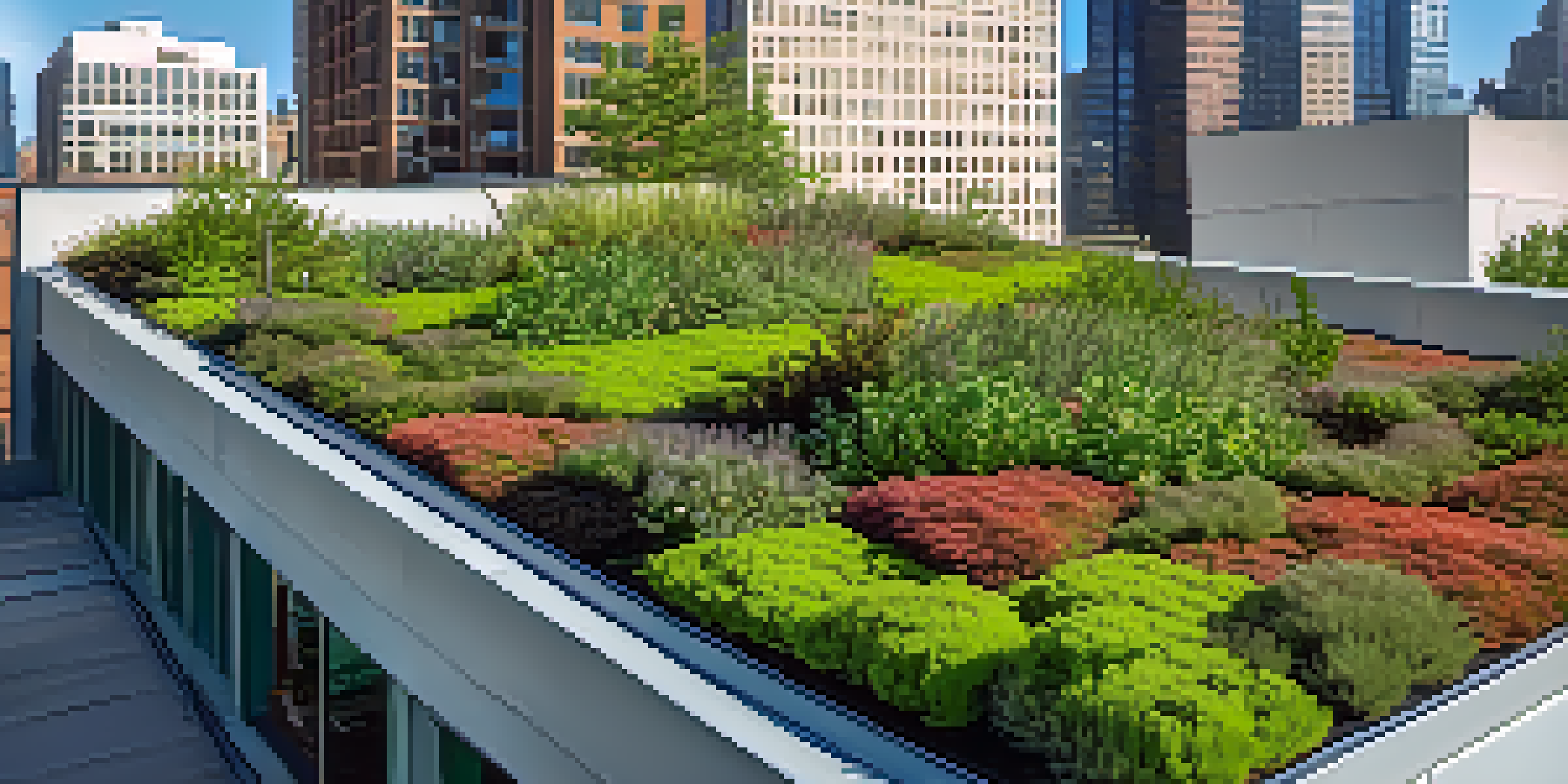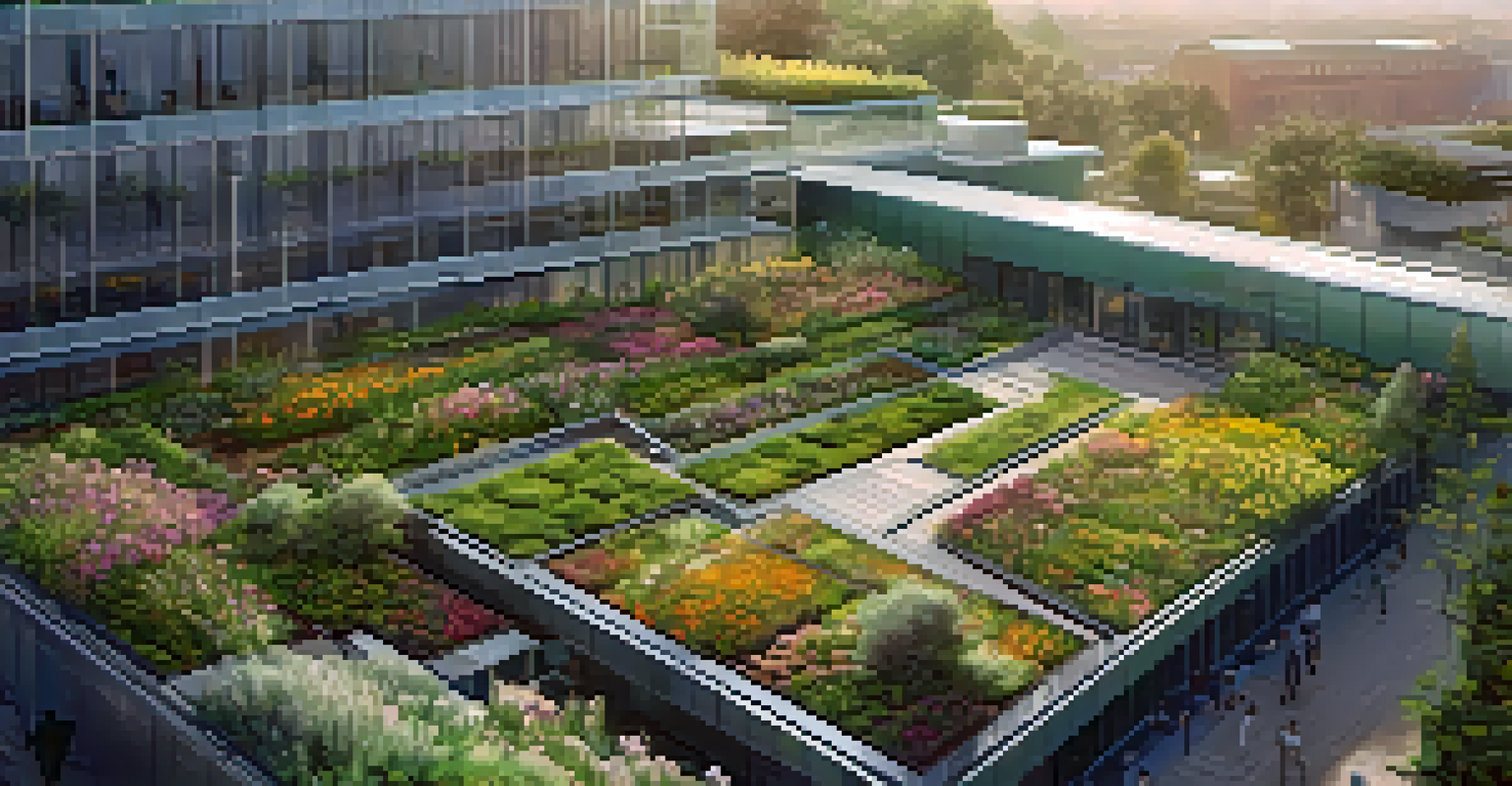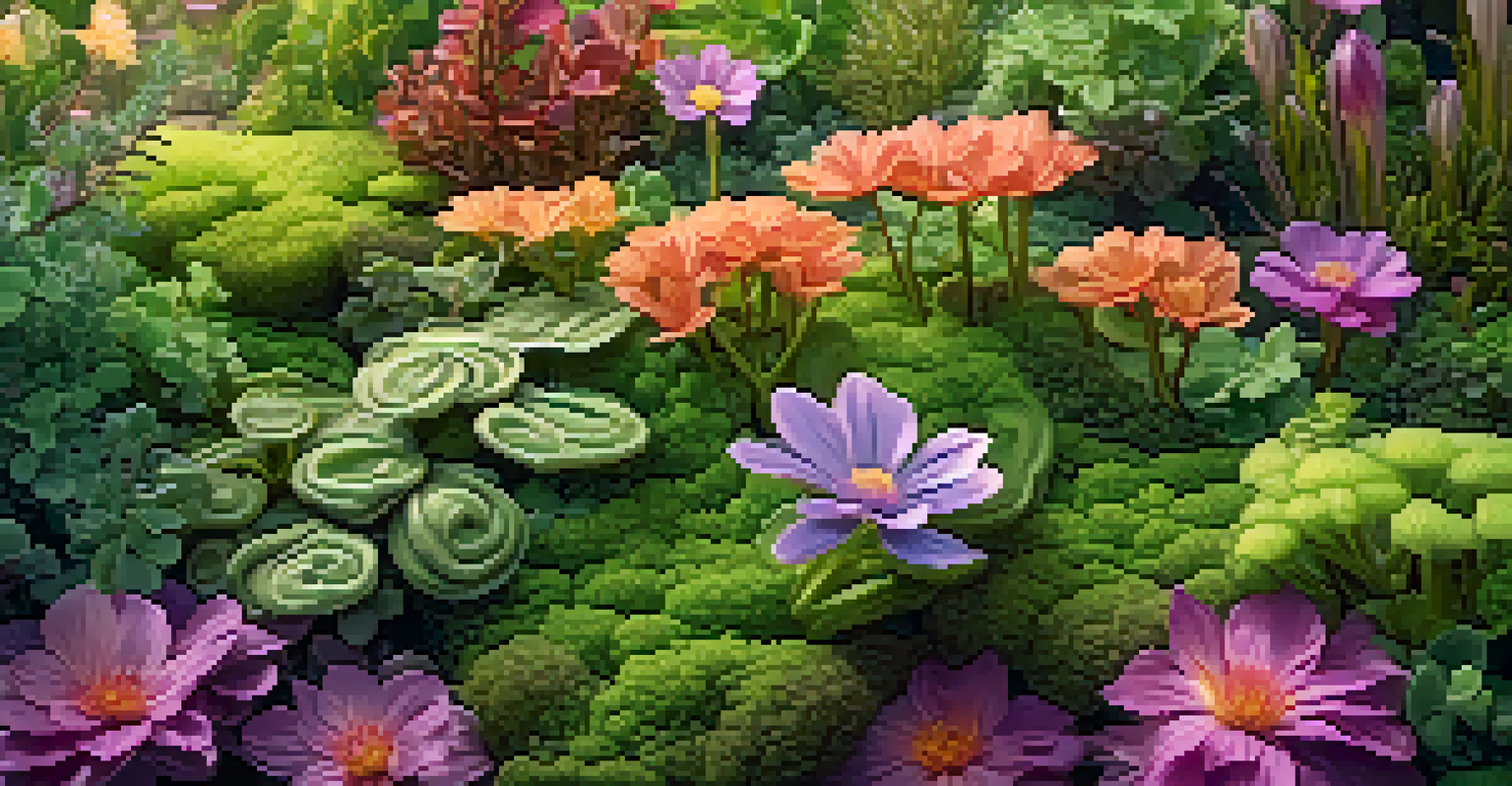Green Roofs: A Pathway to Sustainable Urban Ecosystems

Understanding Green Roofs and Their Benefits
Green roofs are essentially living roofs, where vegetation is cultivated on rooftops. They provide not only aesthetic appeal but also a myriad of environmental benefits. By absorbing rainwater, they help reduce runoff, which can mitigate flooding and water pollution in urban areas.
The greening of our cities is not only beneficial for the environment, but it also enhances our quality of life.
Additionally, green roofs act as natural insulators, reducing energy costs by keeping buildings cooler in summer and warmer in winter. This energy efficiency translates to a smaller carbon footprint, making them a fantastic choice for eco-conscious urban planners.
Moreover, green roofs can improve air quality by filtering pollutants and producing oxygen. In the bustling city environment, they create a much-needed refuge for local wildlife, promoting biodiversity where concrete typically reigns.
Types of Green Roofs: Extensive vs. Intensive
Green roofs generally fall into two categories: extensive and intensive. Extensive green roofs are lighter, requiring less maintenance and featuring shallow soil depths, usually suited for hardy plants like sedums and mosses. They are ideal for urban environments where weight restrictions are a concern.

On the other hand, intensive green roofs have deeper soil layers, allowing for a wider variety of plants, including shrubs and even small trees. This type of green roof requires more maintenance and structural support, but it can offer more substantial benefits in terms of biodiversity and recreational space.
Green Roofs Enhance Urban Sustainability
Green roofs provide environmental benefits like improved air quality, reduced energy costs, and biodiversity support.
Choosing between extensive and intensive green roofs depends on specific goals, local climate, and available resources. Both types contribute significantly to urban sustainability, but understanding their differences is crucial for effective planning.
The Role of Green Roofs in Urban Heat Island Mitigation
Urban Heat Islands (UHIs) occur when cities experience significantly higher temperatures than surrounding areas due to human activities and infrastructure. Green roofs can play a vital role in mitigating this effect by providing natural cooling through evapotranspiration, which is the process of water evaporating from soil and plants.
Green roofs provide a refuge for biodiversity in urban areas, reminding us that nature can thrive even in concrete jungles.
By absorbing sunlight and reducing heat absorption, green roofs can lower surface and air temperatures, contributing to a more comfortable urban environment. This cooling effect can lead to reduced energy consumption for air conditioning, resulting in lower greenhouse gas emissions.
Since cities are projected to grow, addressing UHI through green roofs becomes increasingly important. They not only help cool the urban landscape but also enhance the quality of life for residents, making cities more livable and enjoyable.
Biodiversity and Habitat Creation on Green Roofs
Green roofs provide essential habitats for various species, particularly in densely populated urban areas where green spaces are limited. By introducing native plants, green roofs can attract pollinators like bees and butterflies, which are crucial for maintaining healthy ecosystems.
Additionally, these roofs can serve as resting spots for migratory birds, offering a much-needed refuge in concrete jungles. The unique microhabitats created by different plant species can enhance urban biodiversity, contributing positively to the surrounding environment.
Economic Benefits of Green Roofs
Though initial costs may be higher, green roofs can increase property values and lower long-term maintenance expenses.
By fostering biodiversity, green roofs not only support wildlife but also create an ecological balance within the city. This balance is essential for ecosystem resilience, helping cities adapt to climate change and environmental stresses.
Economic Advantages of Implementing Green Roofs
While the initial investment for green roofs can be higher than traditional roofing systems, the long-term economic benefits are significant. These roofs can extend the life of the underlying roof membrane by protecting it from UV rays and extreme temperatures, reducing maintenance and replacement costs.
Moreover, green roofs can increase property values, as they enhance the aesthetic appeal of buildings and provide additional outdoor space. As more people seek sustainable living options, properties with green roofs may attract higher demand in the real estate market.
Additionally, government incentives and grants are often available for green roof projects, making them more financially viable. These economic considerations make green roofs an attractive option for both developers and homeowners aiming for sustainability.
Challenges and Considerations for Green Roof Installation
Despite their benefits, installing green roofs comes with challenges that need careful consideration. Structural integrity is a primary concern, as roofs must support the added weight of soil, plants, and water. Consulting with a structural engineer can help determine if a building can accommodate a green roof.
Another challenge is maintenance, as green roofs require regular care to ensure the health of the vegetation. This includes watering, weeding, and occasional fertilizing, which can be more demanding than a traditional roof. Creating a maintenance plan is vital for long-term success.
Challenges in Green Roof Installation
Considerations such as structural integrity, maintenance requirements, and local regulations are crucial for successful green roof implementation.
Finally, climate and local regulations can impact the feasibility of green roofs. It's essential to research local climate conditions and zoning laws to ensure compliance and optimal plant selection for the specific environment.
The Future of Green Roofs in Urban Planning
As cities continue to expand, the integration of green roofs in urban planning is becoming increasingly vital. Urban planners and architects are recognizing the importance of green spaces in promoting sustainability, addressing climate change, and improving residents' quality of life.
Innovative technologies, such as smart irrigation systems and modular green roof systems, are making green roofs more accessible and easier to manage. These advancements can enhance the effectiveness of green roofs, ensuring that they thrive even in challenging urban conditions.

Looking ahead, the collaboration between governments, businesses, and communities will be crucial for promoting green roofs. By prioritizing sustainable design and green infrastructure, we can pave the way for healthier, more resilient urban ecosystems.